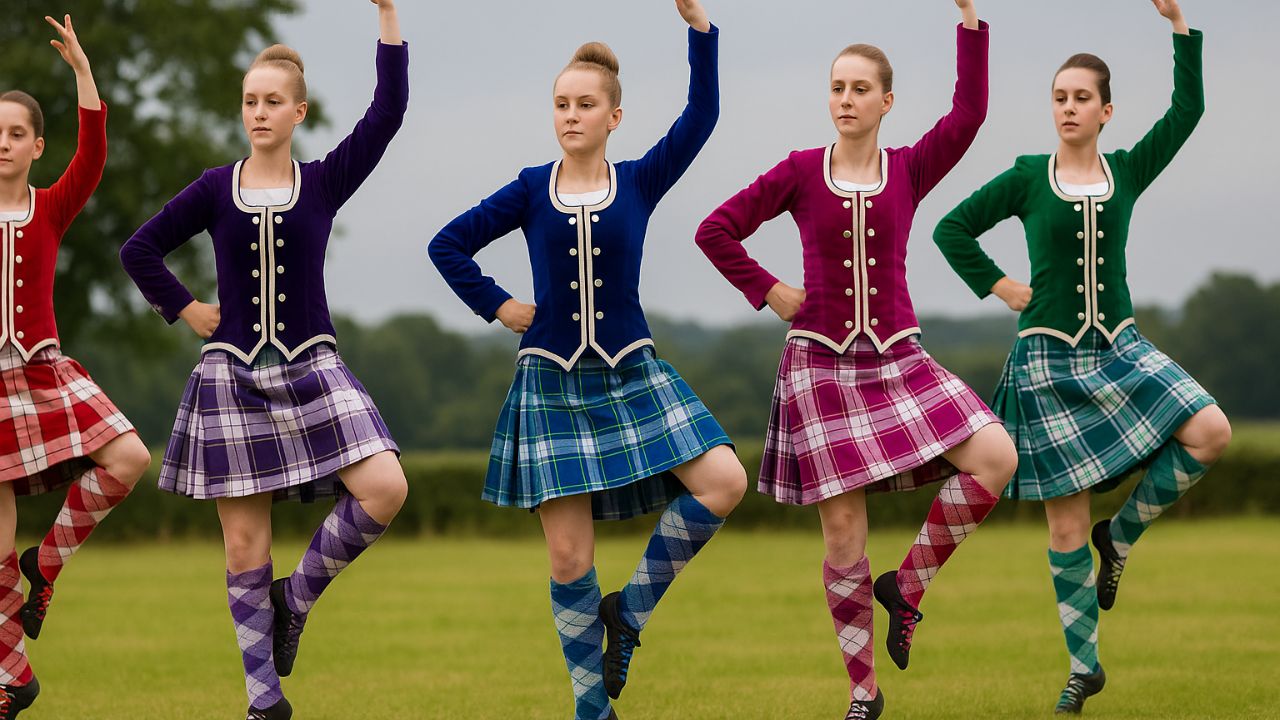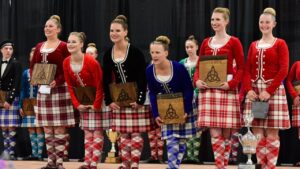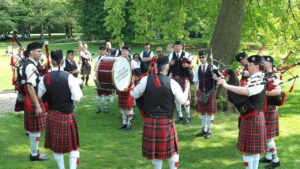The Primary category in Highland dancing is where the youngest competitors begin their journey.
Governed by the Scottish Official Board of Highland Dancing (SOBHD) and administered in the U.S. by the Federation of United States Teachers and Adjudicators (FUSTA), this level is designed for dancers under the age of seven.
While the atmosphere is more about learning and experience than competition pressure, there are still important rules for age eligibility, awards, and dance performance.
This guide explains everything you need to know about competing as a Primary dancer in the U.S.
Who Can Compete as a Primary Dancer?
- Age Requirement: Must be under seven years old.
- A dancer may remain in Primary until their 7th birthday.
- Optional Early Advancement: A dancer can move up to Beginner before age 7 but cannot return to Primary once they advance.
Dance Requirements for Primary Dancers
Pas de Basques and High Cuts
Primary dancers perform one of two approved step combinations:
- Six Pas de Basques and Four High Cuts
- Five Pas de Basques with an Assemblé and Five High Cuts
Both are considered correct, and the choice is typically guided by the dancer’s teacher.
Awards for Primary Dancers
One of the most debated topics among parents and teachers is what awards Primary dancers should receive.
Common Practices in the U.S.
- Participation Ribbons or Medals: Every dancer receives a ribbon or medal as recognition.
- Placement Medals: Many games also award 1st, 2nd, and 3rd place medals in addition to participation awards.
- No Trophies: SOBHD rules prohibit awarding trophies to Primary dancers, whether for individual events or “most points” overall.
Difference Between the U.S. and Canada
- In Canada, it’s more common for Primary dancers to receive medals or trophies in some competitions.
- In the U.S., awards are kept modest to focus on learning and enjoyment.
Age & Readiness: When Should a Child Start Competing?
Minimum Age
- A child must be at least four years old before they can register to compete in SOBHD events.
Readiness Considerations
Even if a child meets the age requirement, readiness is determined by:
- Mastery of basic steps
- Ability to follow competition etiquette
- Stamina to participate in multiple events
Some dancers start competing as soon as they turn four, while others wait until five or six for more confidence.
Primary Highland Dancing Competition Rules
| Rule Area | Primary Category Requirement |
|---|---|
| Age Limit | Under 7 years old |
| Optional Advancement | May move to Beginner before 7, but cannot return |
| Dance Options | 6 Pas de Basques & 4 High Cuts or 5 Pas de Basques with Assemblé & 5 High Cuts |
| Awards | Participation ribbons/medals; 1st–3rd medals allowed; no trophies |
| Minimum Entry Age | 4 years old |
Why the Rules Are Designed This Way
The Primary level is meant to introduce children to competition without overwhelming them.
- Age Limit: Ensures dancers compete with peers at a similar developmental stage.
- Dance Simplicity: Focuses on building coordination, rhythm, and posture.
- Award Restrictions: Keeps the emphasis on fun rather than competition pressure.
Tips for Parents of Primary Dancers
1. Focus on Fun, Not Placements
At this stage, every dancer is building foundational skills. The main goal is confidence and enjoyment.
2. Be Prepared for the Competition Day
Bring:
- Comfortable shoes for walking between events
- Healthy snacks and water
- A quiet space or activity for downtime between dances
3. Communicate with Your Teacher
Discuss:
- Which dance combination your child will perform
- How to prepare for the event without over-practicing
- When it might be time to advance to Beginner level
Common Mistakes to Avoid
- Pushing Advancement Too Early: While moving to Beginner before age 7 is allowed, some dancers benefit from staying in Primary until they are more technically secure.
- Overemphasis on Awards: Ribbons and medals are nice, but they are secondary to skill development.
- Ignoring Event Rules: Even at the Primary level, competition rules must be followed for fair judging.
The Primary category is the first stepping stone in a Highland dancer’s competitive career.
With a focus on learning, enjoyment, and building confidence, the rules at this level are designed to create a positive introduction to the sport.
By understanding age eligibility, dance requirements, and award guidelines, parents and teachers can make the Primary experience both rewarding and stress-free.
FAQs
Can a Primary dancer compete in both Pas de Basque variations during the same competition?
No. They must perform the specific variation chosen for that event.
If my child advances to Beginner before age 7, can they return to Primary?
No. Once a dancer moves up, the change is permanent.
Are Primary dancers judged the same way as older competitors?
While the same technical principles apply, judges often allow more leniency at this level to encourage young dancers.




